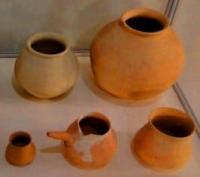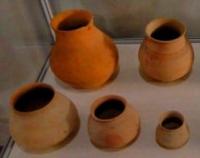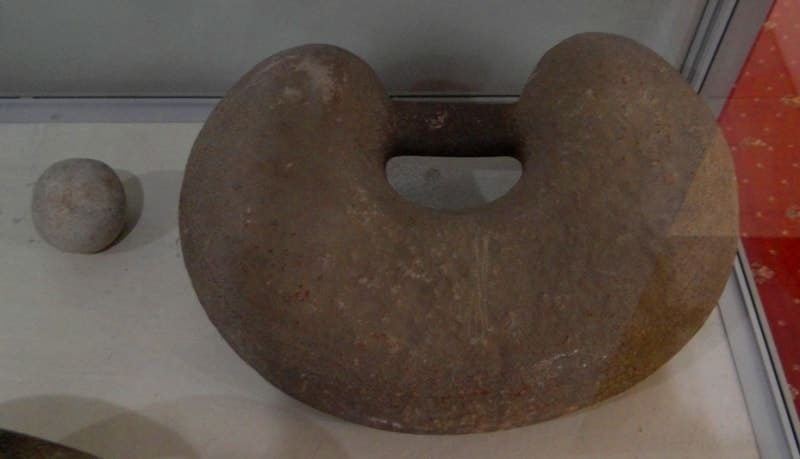You are here
National Museum of Tajikistan.



Excursions on museums of Dushanbe.
“If culture is what remains when everything else is forgotten, then education remains when everything is lost”
Nadine de Rothschild.
Excursions to National Museum of Tajikistan.
National Museum of Tajikistan (taj. Osorkhonai millii Tojikiston) is located on Ismail Somoni Street in the northern part of the State Flag Square in the capital of Tajikistan, Dushanbe. Until 2011, it bore the name of the famous Persian miniaturist Kamoliddin Behzod, who worked at the courts of Hussein Baykar and Ismail I.
In March 2013, with the move to a new building, it is called the National Museum of Tajikistan. The National Museum of Antiquities of Tajikistan was established in 1934 on the basis of the Exhibition of Achievements of the National Economy and Expeditionary Research of the Tajik Base of the USSR Academy of Sciences.
Then the museum had only 530 exhibits. Today there are more than 50 thousand of them. These are the archaeological and ethnographic collections of the museum, including: ceramics, metal, weapons, jewelry, numismatics, manuscripts, sculpture, household items, embroidery, etc.
Among the collections of the museum, a large place is occupied by unique monuments of fine art and culture of the peoples of Tajikistan. Chronologically, the museum's collection covers the period from the Bronze Age, IV millennium BC. e., until the beginning of the XXth century.
Collections of numismatics include ancient treasures, single and random finds of coins. Unique in the collection of coins are Samanid coins made of silver and copper with Kufi inscriptions (IX century), a gold coin of the Kushan king Vasudeva (IV century AD), accidentally discovered in 1956, a Bukhara silver coin with Sogdian inscriptions (V - VI century).
The collections of household utensils - bowls, jugs, vessels of various shapes, jewelry made of glass, stone, fragments of weapons are most widely represented in the museum's funds. These items come from the territory of Sogd (the basins of the Zeravshan and Kashkadarya rivers) and date back to the middle of the 1st millennium B.C.
They were discovered during excavations of an ancient settlement located not far from modern Penjikent. Of interest is the collection of objects of material culture from the Sogdian castle on Mount Mug (VIIIth century AD) in the upper reaches of the Zeravshan.
The objects were discovered by Professor Freiman's expedition in 1933. Among the outstanding monuments is the world-famous Iskodar Mehrab (XI - XII century AD), discovered by Professor Andreev in the village of Iskodar in 1925.
The mehrab (a niche with a pointed end in the wall of the mosque, points in the direction of Mecca) is made of wood without a single nail and glue, by adjusting the details. Consists of 300 details and more than 100 ornamental motifs. It has a Kufic inscription on it.
This inscription was not deciphered until 2000. Sharipov A. deciphered it. It turned out to be a statement of the Prophet Muhammad. It is interesting to note that the mehrab has elements of the Zoroastrian cult of the ancient Tajiks.
For example, a vortex cross and a circle with a hemisphere, which have long been solar (solar) symbols. . The collection of coroplasty of Sogd - small terracotta art objects: figurines depicting people and animals, is small, but they reflect the religious ideas of the population of Tajikistan in the middle of the 1st millennium B.C.
The largest clay Buddha statue in the world is exhibited at the National Museum of Antiquities in Dushanbe. A giant clay statue was found by the Tajik archaeologist B.A. Litvinsky during excavations of a Buddhist temple on the hill of Ajina-Tepa (Jin Hill) in the valley of the Vakhsh River near the city of Kurgan-Tube in 1964 - 1968.
On Tajik soil, archaeologists find hundreds of ruins of Buddhist temples and monasteries. The temple on Ajina Tepa was badly damaged during the Arab conquest in the 7th century, the statue was thoroughly mutilated by the conquerors - the face and part of the chest were broken.
A team of restorers from the Leningrad Hermitage had to work hard to collect, fix with special impregnation and transfer to Dushanbe all that was left of it - 43 parts and fragments. For many years, they were all kept in the boxes of the restoration workshop of the Institute of History, Archeology and Ethnography. A. Donish Academy of Sciences of Tajikistan.
For more than twenty years, only the head and hand of the statue have been restored: in a tiny room of the laboratory it is impossible it was necessary to put together even a part of a giant figure. Such an opportunity finally appeared for the restorers when the National Museum of Antiquities was built by the Institute, where the largest hall was allocated for the Buddha.
Here, V.A. Fominykh, who has already traveled to Tajikistan to remove a unique clay statue of Shiva Parvati (Vth century AD), has been working in the laboratory for the restoration of monumental painting for many years.
The restoration of the giant reclining statue took two seasons - in 2000 and 2001. Vera Alekseevna will remember this work in forty-degree heat, among poisonous solvents and impregnations for a long time: together with two assistants - Parvina Abdullaeva and Sergey Gabel - she often worked at night when it was cooler.
In 2002, she again came to Tajikistan to complete the "treatment" - the reconstruction of the fingers of the Buddha lost during the excavations. The hands of V. Fomins in the Museum of Antiquities in the same year also restored the wonderful wall frescoes of ancient Penjikent (V - VIII centuries AD), well known among art historians of the world.
Now "Buddha in Nirvana", the largest clay statue of this deity in the world and the only such giant in the entire space of the Middle East up to the borders of India, appeared before the eyes of thousands of visitors to the National Museum of Antiquities.
n March 2013, the opening ceremony of the new building of the National Museum of Tajikistan took place in Dushanbe. The museum consists of 22 large and small exhibition halls. These are exposition departments of nature, antiquity and the Middle Ages, modern and recent history, fine and applied arts.
A research department was formed at the museum, where there are departments of written heritage, and departments of archeology and numismatics, new in the museum activity of Tajikistan. An international department has been established for cooperation with foreign organizations.
In addition, there is a fund department, an accounting department and a restoration department. The exposition area of the National Museum of Tajikistan is 15,000 square meters.
Geographic coordinates of the Behzod Museum in Dushanbe: N38°33'48.46" E68°47'56.75"






Authorship:
Javad Abed Khorasani. http://www.asraresokhan.com
Photos by
Alexander Petrov.







